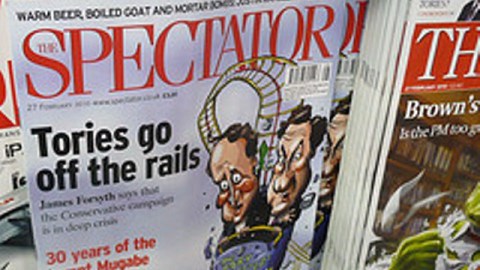As Newspapers Decline, Niche Publications Prosper

The best – and the worst – predictions for the newspaper industry don’t always come true. When Eddie Shah famously broke the print unions at his Stockport print and distribution plant in the late 1980s in North West England, the accepted wisdom was that there would be a flowering of new newspaper titles. Twenty odd years later, and only The Independent survives from that brave dawn. Barely a decade ago the new accepted wisdom was that the days of the ‘dead tree press’ were finite. We were even advised on the likely day and date when the last ever New York Times would roll off the presses.
That it’s bad for nationals and locals alike isn’t disputed. And yet for all of the deep seated problems of The Guardian or the Daily Mirror, there are continuing challengers to that trend – the Financial Times and the Daily Mail spring to mind. Newspapers are struggling, there may be fewer titles in a decade’s time but talk of their death is premature. Hope also emerges from a recent IPSOS poll, where 63% of respondents said they preferred printed copies of newspapers and magazines to eleven per cent who liked the digital versions. But then that poll could be compared to one that ask people if they prefer better services or paying more tax.
But what of the weeklies? How are they faring in a notoriously tough market?
At around the time that assorted soothsayers were issuing last rites for the dailies, I seem to recall making the bold prediction that niche market publications might well be able to hold their own in the brave new World, a brave new World where attention spans would be limited by the time it takes to click a mouse. Magazines such as Private Eye which were both original and had a loyal following – and didn’t make the foolish error of putting their content on the web – were pretty well placed to weather the storms ahead. And so, at least for the Eye, this has come to pass. Sales of the magazine remain buoyant, and editor, Ian Hislop, puts this down to the fact that “Private Eye tends to have an upturn when there is a downturn. People want to laugh at the situation, before they cry at the detail. The Eye tries to help”. Hislop’s predecessor, Richard Ingrams, now Editor of the Oldie concurs. The Oldie now sells upwards of 37,000 copies, and attracts a broad and eclectic range of contributors – many of them refugees from Fleet Street. “It is supposed to be bad out there”, says Ingrams “but we seem to be doing quite well. One of the main reasons is that there is a lot less original content in newspapers, and they are all writing about the same thing. Which is frankly boring”. The editor of the perennially successful Spectator, Fraser Nelson is equally upbeat; “Anecdotally I hear that the market is tough, but we’ve just had a successful re-design and we are fairly steady at around 70,000 circulation”. Even my old magazine, Tribune, under new ownership, looks crisp and urgent and Editor Chris McLaughlin continues to defy the doomsters. But then these magazines are specialist in that they tend to stand for something, and attract controversy and loyalty in equal measure.
The resilience of many of our weeklies is even more remarkable when you consider just how near impossible the news trade has become. Ingrams and I are both veterans of wars against “WH Smug” – we once threatened a picket against the retailer, a protest that was due to be joined both by Michael Foot and Auberon Waugh. WH Smith insisted on charging for space, reducing orders if they fell for any particular reason in one week, and not increasing the order thereafter. The news trade in Britain remains monopolistic – a situation worsened by the closure of Borders – and retailers, including the large super markets charge for display, making it all but impossible for much smaller specialist magazines to get space. One of the last independent radical bookshops to give space to the extraordinary diversity of magazines still out there, Housmans, recently initiated a campaign for other independent bookshops to stock magazines. “Post Borders, the fight for survival is becoming intense”, says Nik Gorecki of Housmans. “The likes of The Ecologist, Pink Paper and Lobster – and most recently Smoke, a London peculiar have disappeared from shelves altogether and gone on-line”.
The successful niche magazines have come through the worst of times by building up their subscription bases, and using the web in an intelligent way that does not detract from sales – but encourages them. Private Eye famously offers a web taster, and not much more than that, to encourage potential readers to get their credit cards out. But what is most striking about the success stories is that good old fashioned good, incisive writing, humour and ideas just seems to shift copies and boost sales.
*This article has just appeared in the British Journalism Review





